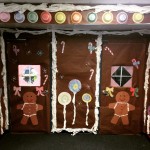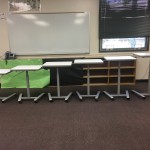I was walking to my classroom during my prep period one morning when I was passing a kindergarten class. They were walking in a squiggly line, their teacher instructing them at the back. Beads of sweat were present on all 22 tiny faces. A little girl at the front of the line looked up at me, smiled and said, “You look LOVELY today, teacher!.” I smiled back at her and said, “Thank you so much for the compliment! I love your blue dress!.” Within seconds, all the other students around her in the line began smiling at me, waving and telling me various phrases that were kind. “I like your shoes!”, “Your hair is so pretty!” and “You smile like my mommy!.” Their teacher, Mrs. Sloane, grinned and shouted, “Bubbles in mouths, please!.” Under her breath, she told me, “I agree with Jayden; love the skirt.”
Walking back to my room, I felt like a celebrity, all smiles and excited for the rest of my day. I felt relaxed and happy as I settled into my chair.
There are many incredible benefits to kindness; from lower blood pressure levels to improved self esteem, people tend to live happier and healthier lives when they take the time to show kindness to others. Kindness can be as simple as a kind word to a colleague, flowers for your neighbor or making a special meal for a friend going through a tough period.
When was the last time you witnessed an act of kindness or performed one for another person?
As a college student, I spent my days in the education program learning the ropes in all aspects of teaching: how to write lesson plans, communicate with parents, where to find resources for differentiated learning and how to manage behavior. As much as it helped me to engage with these things, the learning experience that stood with me the most was in my reading class. Our professor held class in a bookstore, and it truly gave us the opportunity to find and discuss literature that would impact our students. I was introduced to the book, “Have You Filled a Bucket Today?: A Guide to Daily Happiness for Kids”, by Carol McCloud. The concept is simple: we all have an invisible bucket we carry with us each day. When we do or say kind things to others, we fill their bucket, as well as our own. When we do or say unkind things to others, we take from their bucket. The story teaches readers that showing care for others makes our world a more positive place. It promotes and challenges readers to become a “bucket filler” who finds ways to be kind to others. Once I read the book, I couldn’t wait to share it with my own classroom each year. My goal as a teacher was to read the book on the first day of school with each new class.
Fast forward to August 2007……
I walked into my very first classroom on the first day of school with one thought on my mind: our class read aloud. It sat on our library shelf, perfectly centered, sitting in the sunlight. It emanated this lovely glow as if inviting classroom members to be drawn to it. My stomach was filled with butterflies as the bell rang and I heard the door open. I smoothed my hair and quickly gulped some iced coffee. One by one, 25-second graders filtered in, and the room soon filled with nervous chatter. I stood by the door and greeted them all with a smile and kind word. I noticed that each time I said something kind to the students, they broke out into a huge grin and returned the kindness with their own sweet words. I knew our reading aloud would fit in perfectly. As I watched the students explore the room, there were many that asked if we would be reading a book together soon. When I asked which one sounded good, they pointed to the one I already had in mind.
How do you plan to fill a bucket today?










Comments 1
I love how the kinder students gushed over you. My friend’s 7th-period class had a group of students that loved to give compliments. So they made an official club called “The Compliment Club” and they would come over to my class every now and then to shower me and my class with compliments. It’s one of my favorite things of 7th period now!